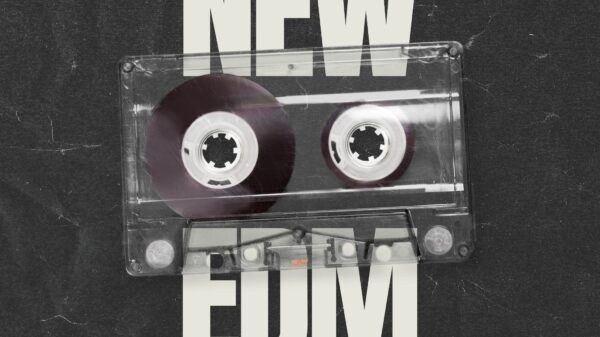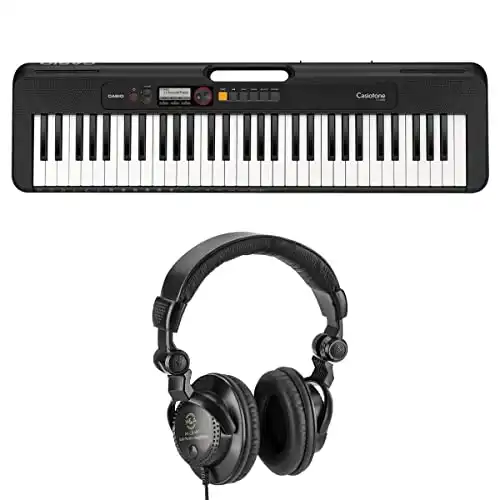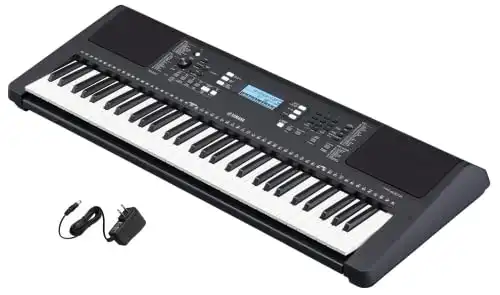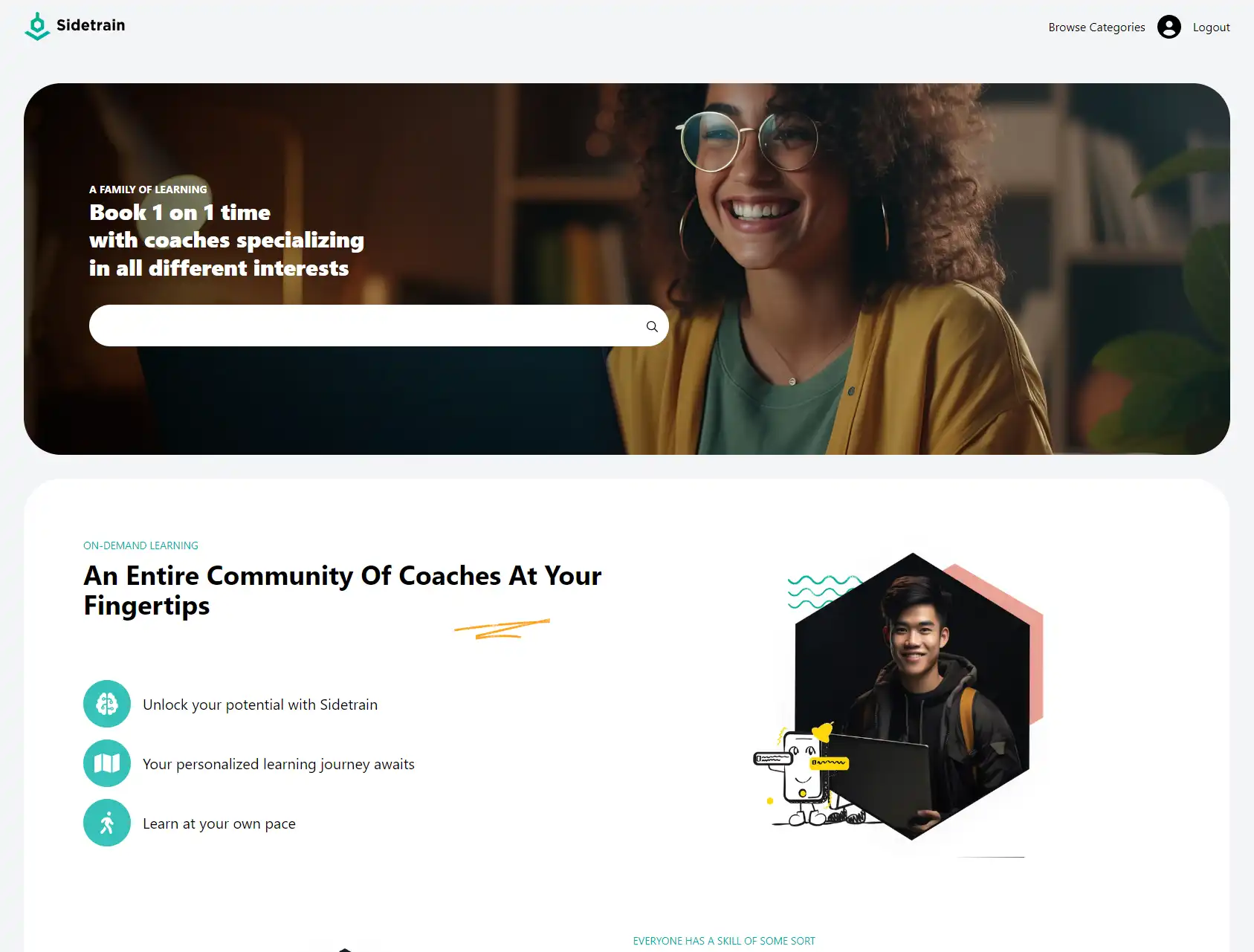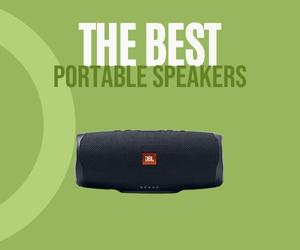Learning to play the piano can be an exciting and rewarding endeavor. With the right guidance and consistent practice, anyone can go from piano beginner to skilled pianist. This comprehensive guide will teach you everything you need to know to start playing piano, from buying your first keyboard to mastering chords and songs. Let's get started!
Getting Started with Piano
Why Play Piano?
Here are some of the great benefits of learning to play piano:
- Express yourself musically – The piano allows you to play a wide range of styles, from classical to pop to jazz. You can learn songs you love while also creating your own music.
- Relieve stress – Playing piano has been shown to lower cortisol levels and reduce anxiety. It's a great creative outlet at the end of a long day.
- Strengthen cognitive skills – Reading sheet music, listening to your playing, and learning new songs engages both sides of your brain. Musical training improves memory, focus and concentration.
- Social outlet – You can join a piano recital or take lessons. Playing with other musicians provides social connections through a shared love of music.
- Boost confidence – Mastering songs and techniques at your own pace builds a sense of pride and achievement. Piano skills are impressive at parties and events too!
- Portable skill – An acoustic or digital piano allows you to play anywhere. Piano knowledge applies to many other instruments as well.
Getting Set Up with a Piano or Keyboard
To start your piano learning journey, you'll need access to a piano or keyboard. Here are some options to consider when choosing your first instrument:
- Acoustic upright or grand piano – These offer the traditional piano playing experience with weighted, responsive keys. However, they can be expensive, large, and difficult to move.
- Digital piano – Digital pianos mimic the feel and sound of an acoustic piano in a more affordable, compact, and low maintenance package. Popular models include the Yamaha P71, Casio CDP-S100, and Roland FP-10.
- Keyboard – Basic keyboards are lightweight and portable with a budget-friendly price tag. While keys feel different from a real piano, they allow you to start learning and practice. The Yamaha PSRE363 is a top beginner keyboard.
- MIDI keyboard controller – This connects to a computer and allows you to play virtual instrument sounds through piano-style keys. Useful for learning and recording music.
- Rent-to-own – Stores like Sam Ash and Music & Arts offer rent-to-own programs that allow you to rent a digital piano while payments go towards eventual ownership. This makes higher quality instruments more accessible for beginners.
Make sure to try out any instrument in person or read reviews to ensure the keys feel responsive and realistic for learning proper technique.
Hand Position and Posture
Proper hand positioning and posture at the piano will allow you to play comfortably and accurately. Follow these tips:
- Sit at the middle of the keyboard with your back straight and elbows relaxed at your sides. Adjust seat height so your forearms are parallel with the keys.
- Keep both feet flat on the floor. The ball of each foot should rest on the pedals. Scoot to the edge of the seat if needed.
- Rest the curve of your fingers on the smooth key surfaces. Keep palms elevated above the keys.
- Keep wrists straight but flexible as you play. Avoid angling left or right.
- Let arms and shoulders hang loose to keep tension from accumulating.
Proper form takes concentration at first but becomes second nature with regular practice. Repetition builds good habits.
Learning Piano Basics
Now that your piano or keyboard is set up properly, let's overview some fundamental piano techniques and music theory that every beginner should know.
The Keys
- A standard piano contains 88 keys total. 52 white keys and 36 black keys.
- The white keys are named A, B, C, D, E, F and G and repeat in 7 consecutive steps from left to right.
- The black keys fall between the white keys and are called accidentals. They include sharps and flats.
- Each key corresponds to a specific piano note and pitch. The lower left keys produce deeper bass tones while higher right keys create brighter treble tones.
The Staff
- Sheet music is written on the musical staff which consists of 5 lines and 4 spaces.
- The staff shows which piano keys to press and how long to hold them based on note position and symbols.
- Treble clef notates higher notes on the right side of the piano. Bass clef notates lower notes on the left side.
- Notes correspond with a line or space. Memorize the phrase “Every Good Boy Does Fine” to remember the note names ascending on the staff lines. F-A-C-E indicate spaces.
Playing a Note
- To play a note, press the corresponding piano key for that note on the staff. Press gently on the front part of the white key or press keys with your finger pads.
- Hold notes for their full beat value (whole, half, quarter, etc.) before lifting your finger to release the sound.
- Follow the rhythm symbols like quarter and eighth notes carefully as you read sheet music. Count in your head if needed.
- Let notes ring out fully before playing the next one. Avoid abrupt cuts unless indicated by a rest symbol.
Finger Numbers
- Consistent finger patterns while playing will set you up for success as pieces get more complex.
- Number your right and left hand fingers 1 (thumb) through 5 (pinky).
- Follow the finger number notations in sheet music, especially when learning a new piece. This will help build proper technique.
- Aim to keep wrists and knuckles aligned when playing with different fingers. Relax shoulders to avoid tension.
Reading Music Notation
- Notes show pitch moving higher from left to right on the staff and which key to play.
- Stems indicate note duration. Up stems mean right hand plays those notes. Down stems indicate left hand.
- Bar lines divide written music into measures to define the rhythmic pulse.
- Dynamics like p (piano/quiet) and f (forte/loud) tell you how loudly or softly to play.
- Articulation like staccato (short detached notes) and legato (smooth connected notes) affects how you'll play notes.
- Key signature at the start shows which notes to sharpen or flatten throughout the song.
Maintaining Steady Tempo
- Use a metronome during practice to improve your rhythm and sense of timing. Set it to the beats per minute (BPM) listed at the top of sheet music.
- Tap your foot along with the metronome steadily. Nodding your head can also help lock in the tempo.
- If you speed up or slow down, gently return to the correct pace. Being mindful of tempo will make playing with both hands easier.
- Mark tricky timing transitions in the music with reminders like “slow down” and “accelerate.” Review these spots until the changes become fluid.
These music reading and playing fundamentals will become second nature with regular piano practice. Be patient, stick with the basics, and speed will develop over time.
Beginning Piano Songs to Learn
Once you have the basics down, it's time to start playing full songs! Here are some easy piano songs for beginners to get started with:
Ode to Joy
This bright and cheerful classical piece by Beethoven is great for practicing finger dexterity in the right hand. The left hand jumps between full chords on each beat. Count rhythms out loud and take it slowly at first.
Heart and Soul
Familiar to many from the classic duet scene in the Peanuts cartoons, this lively tune has simple chords and melody. Arrange it with a fellow pianist to play the dual parts together.
Lean on Me
The uplifting gospel vibe of Bill Withers' “Lean on Me” makes it a friendly intro to rhythmic chord patterns. Let the left hand chords drive the beat while the right hand soulfully improvises melodies on top.
Imagine
John Lennon's idealistic ballad has a soothing, memorable melody all piano beginners can manage with some practice. Focus on smooth legato playing and dynamics that swell and recede.
Fur Elise
This signature Beethoven solo piece may sound advanced but contains many repetitious one-hand patterns. Break it down into short sections and get each hand comfortable separately.
Jingle Bells
Nothing says holiday cheer like this winter favorite. Play each hand alone to memorize the steady left hand chords and catchy right hand melody before combining them together.
Twinkle Twinkle Little Star
Every piano student knows this comforting lullaby. But don't overlook it as merely a kids' tune. Focus on articulation and exaggerating the smooth legato phrasing that gives it a peaceful bedtime feel.
Happy Birthday
Celebrate your newfound piano skills by playing this familiar party song. Adapt it to any key and tempo you'd like once the basics are down. Have fun jazzing up the melody or harmonizing in thirds.
These popular beginner piano pieces will help you gain confidence while reinforcing fundamental techniques like reading notation, rhythmic counting, chord playing, finger dexterity and more.
Advancing Your Playing Skills
Let's go over some more intermediate piano skills to start honing as you get comfortable with the basics:
Scales/Arpeggios
- Playing scales and arpeggios builds dexterity, speed, and fluidity across the keys.
- Start with one-octave C major scale. Play up and down using the thumb under technique.
- Next tackle major scales up to sharps and flats like G and F major. Then minor scales and arpeggios.
- Use metronome practice to incrementally increase speed while maintaining accuracy. This piano exercise will really benefit your playing.
Chord Theory
- Understand how major, minor, augmented and diminished chords are constructed from the root, third and fifth scale degrees.
- Incorporate 7th chords, extended chords, inversions and chord progressions as you advance.
- Recognize chord symbols like Am7, Gmaj7, Fm6, Cdim7 in sheet music and how to form them on piano.
- Train your ear by listening to recordings and identifying chord changes and types by ear.
Sightreading
- Reading and accurately playing new music on the first try is an important skill. Sight-reading takes daily practice.
- Start with very easy exercises like 5-finger patterns before moving to full songs.
- Keep your eyes on the sheet music without glancing down at keys. Maintain a steady tempo.
- Don't stop for mistakes. Stay calm and keep going to build sight-reading confidence.
- Practice reading both clefs. Work up to reading ledger lines, complex rhythms, and key changes.
Improv and Playing By Ear
- Learning to play songs by ear and improvise your own melodies also expands your skills.
- Pick out the melody to familiar easy songs without sheet music.
- Echo back rhythmic patterns and melodic phrases.
- Improvise over simple chord progressions like I-IV-V-I using pentatonic scale patterns.
- Let go of perfection and let your creativity flow freely. There are no wrong notes when improvising!
Pedaling
- The sustain pedal adds expression and smoothness to your playing.
- Press down with the ball of foot near the end of each harmony change. Release between chords to avoid muddiness.
- Get familiar with the different pedals on acoustic pianos and their uses like soft and sostenuto pedals.
- Add measured pedal work to pieces you've mastered to elevate phrasing and tone.
Patience and consistent daily practice with these more advanced piano techniques will help polish your skills as you move past the beginner phase. Stay focused on your progress and enjoy the journey!
Piano Practice Tips for Beginners
Regular piano practice is essential for improving your skills. Here are some top tips for making the most of your practice sessions:
- Set a consistent routine – Designate certain times each day to practice even for just 15-30 minutes. Consistency helps build lasting progress.
- Warm up first – Play finger exercises, scales, arpeggios, or easy songs to get hands warmed up and brain focused before diving into harder practicing.
- Vary your practice – Mix up lessons/songs, drills, sight-reading, theory, and free play rather than zeroing in on just one skill each session.
- Take breaks – Give your hands and mind short breaks every 20-30 minutes. Stretch, walk around or visualize your music. This refreshes focus.
- Slow it down – Isolate tricky sections and practice hands separately at a slower tempo. Gradually increase speed once each hand can play parts accurately.
- Avoid distractions – Turn off screens, phones, and background noise so you can concentrate fully on piano practice.
- Stay patient – Learning an instrument takes time and consistency. Celebrate small daily achievements on your piano journey.
- Have fun! – Approach practice with a relaxed, positive attitude rather than putting pressure on yourself. Playing music should be enjoyable.
Recording yourself or playing for others is great motivation. But remember, progress happens in the consistent daily practice between lessons and playing times. Stick with it!
How to Practice Piano Chords
Chords are what give piano music its harmony and fullness. Here are useful ways to practice chords:
Drill chord shapes – Simply run through all the major, minor, diminished etc chord shapes across the full keyboard range. Say chord names aloud to memorize their fingering patterns.
Play chord progressions – Practice switching between chords in different orders like I-IV-V-I to train smooth transitions between chord shapes.
Single hand drills – Play three-note chords with just one hand. Then switch and do the other. Eliminates coordination struggles.
Arpeggios – Break chords into individual notes played one after the other. Helps internalize chord structure.
Chord inversions – Play chords with notes in different orders. For example, C chord in root position, first inversion, and second inversion.
Strum chords – Solo instrument skills translate to piano too. Strum chords with one hand as if playing guitar to hear their sonic character.
Chord recognition – Name chords you hear in songs to develop your ears. Check with sheet music to see if you identified correctly.
Roll chords – Play notes of a chord quickly one after the other into the next chord for a rolling flow. Makes changes smoother.
Lead with left hand – Physically turn towards your left hand while playing to give it more focus and grow chord playing confidence.
Be patient and celebrate small daily chord playing achievements. Regular targeted chord practice interspersed during daily sessions pays off.
10 Common Piano Playing Mistakes To Avoid
Learning proper playing technique from the start prevents bad habits. Watch for these common beginner mistakes:
- Stiff wrists and tension – Keep wrists flexible to avoid injury. Shake hands out often to release tension.
- Ignoring finger numbers – Follow fingering notations in sheet music to build good habits.
- Forgetting the pinky – Don't neglect your pinky finger. Use it to develop dexterity and strength.
- Uncontrolled pedaling – Use the sustain pedal with intention, not randomly through entire songs.
- Playing too fast too soon – Build up finger dexterity and reading skills before attempting quicker tempos.
- Not counting rhythm – Subdivide beats out loud when struggling with timing. Rushing and dragging are common issues.
- Failure to review – Revisit previously learned pieces often to retain songs long-term.
- No steady beat – Use metronome and tap foot to improve your internal sense of rhythm and pulse.
- Ignoring hard spots – Don't gloss over tricky measures. Isolate them and repeat slowly with separate hands if needed.
- No warm up – Always warm up hands and mind with scales, exercises or easy playing before intense practice.
Being mindful and addressing these common missteps will set you on the path for success. Develop good habits now to avoid having to correct them later down the road.
How to Read Sheet Music for Beginners
Learning to read sheet music unlocks a world of songs and pieces to play. Here are the basics:
- Notes – Notes are like letters that tell you which keys to play. Notes sit on lines or spaces.
- Clefs – Clefs show pitch range. Bass clef notates left hand. Treble clef notates right hand.
- Time signature – The top number indicates how many beats per measure. The bottom is which note value gets a beat.
- Staff – There are 5 lines and 4 spaces. Notes ascend going up the staff.
- Rhythm – Note and rest values indicate how long to play or pause. Whole note = 4 beats, half = 2 beats etc.
- Key signature – This indicates which notes to play as sharp or flat throughout the piece.
- Musical symbols – Symbols for dynamics, articulations, fingering, repeats and more affect how you'll play the notes.
Start very simply by reading and playing individual notes. Then slowly combine into intervals, short melodies, and single line beginner songs. With daily practice, sheet music reading will become more fluid and intuitive.
Playing Piano from Lead Sheets & Chord Charts
Here's more on playing from lead sheets and chord charts:
- Lead sheets – Contain the song melody notated, lyrics, and chord symbols above like C or Am7. You improvise your own left hand chord comping and stylings around the melody.
- Chord charts – Simply provide chord names, sometimes with lyrics. Used in pop, rock, jazz, and country music backing bands who know common chord progressions.
- Comping – This means accompanying a melody by playing chords and rhythmic patterns in the left hand. Keep it simple at first, then expand.
- Chord inversions – Use varied chord inversions to voice lead bass notes smoothly to the next chord. For example, C to Am could be root position C then Am with A as the bass note.
- Walking bass – For a jazz feel, you can arpeggiate chord tones into a “walking” moving bassline that leads to the next chord. Outline the changes.
- Strum patterns – In pop/rock songs, strum chords steadily in rhythmic down and up strokes. Vary strum speed to match song feel.
- Know chord types – Learn major, minor, dominant, diminished chords to interpret chord symbols accurately. Listen to the song to pick up stylistic nuances.
Lead sheets and chord charts give you creative freedom. Use your ear and theory knowledge to craft stylish left hand parts that support the melody and genre.
How to Improvise on Piano as a Beginner
Improvisation may seem intimidating but using a framework makes it approachable:
- Pick a chord progression – Stick to simple I-IV-V-I changes like C-F-G-C to start.
- Establish tempo – Set a steady beat with a metronome or drum loop app at a comfortable pace.
- Outline chord tones – Emphasize notes from the chord you're on like the root, third, fifth, and seventh.
- Transpose ideas – Take short melodic motifs you come up with and move them up or down steps within the key.
- Echo rhythms – Imitate rhythmic patterns you hear in the chords or backing track. Syncopate them in creative ways.
- Use pentatonic scale – The five-note major or minor pentatonic scale offers familiar improv shapes.
- Listen actively – Let your ears guide you in response to the backing chords rather than thinking theoretically.
- Have fun! – There are no wrong notes. Be playful and let go of perfectionism. The goal is expression.
Improvising takes patience and practice. Stick to a simple framework at first and let your creativity flow freely to make music in the moment.
How to Buy a Piano or Keyboard for Beginners
Choosing your first piano or keyboard can be exciting and a bit overwhelming. Consider these factors:
- Budget – Acoustic pianos range from $3,000+ for grands to $500+ for uprights. Digital pianos run $500-$1,500. Basic keyboards are $100+. Set a comfortable budget.
- Keys – Standard pianos have 88 keys. Smaller keyboards have 61, 76 or fewer. Keys should be touch sensitive. Weighted or hammer action keys feel most realistic.
- Sound – Digital piano samples mimic real piano tones. Keyboards offer other instrument sounds for more variety. Listen before you buy.
- Speakers – Play keyboards you’re considering to hear sound projection. External speakers can boost volume.
- Portability – Do you want something portable? Stage pianos and keyboards pack up to travel. Acoustic pianos are heavy.
- Accessories – Will you need a stand, sustain pedal, extra power adapter? What’s included with purchase?
- Try before buying! – Visit stores to test instruments in person. Comfort and playability is key.
Doing research ahead of time makes selecting the right starter piano or keyboard easier. Find models in your budget range with the sounds and features you’ll enjoy playing.
Best Beginner Digital Pianos
Here are some top-rated digital piano models under $600 to consider for beginners:
Yamaha P71
- 88 hammer action weighted keys
- Matte finish adds traction
- 10 preset voices
- USB MIDI connection
- Costs under $500
Casio CDP-S160
- 88 keys with hammer action
- Bluetooth MIDI connection
- 400 instrument tones
- 60 practice songs
- Under $600 price tag
Alesis Recital Pro
- 88 premium hammer action keys
- 12 built-in voices
- 20W speakers
- Lesson mode with follow lights
- Budget-friendly at around $200
Casio CT-S200
- 61 keyboard
- Touch sensitive keys
- 550 tones, 77 rhythms
- Dance Music Mode
- Very affordable at around $120
Always try playing a digital piano first before purchasing if possible. But these keyboards offer quality sounds and key actions at reasonable prices for beginners.
Best Keyboards for Beginners
Here are top basic keyboard models under $200 for piano beginners:
Yamaha PSRE363
- 61 mini keys
- Touch sensitive
- 700 voices, 205 rhythms
- Onboard lesson system
- Around $160
Casio SA-51
- 32 mini keys
- 100 tones, 50 rhythms
- USB MIDI connection
- Extremely portable
- About $50
RockJam 61
- 61 standard keys
- Headphone jack, record function
- 100 keyboard sounds
- Includes stand
- Under $100
Hamzer 61-Key Electronic
- 61 semi-weighted velocity keys
- 255 instruments, 255 rhythms
- 12 demo songs
- Stand, headphones, power supply included
- Costs approximately $85
Basic no-frills keyboard models remove extra features to focus on responsive keys and sturdy construction for new players while keeping prices low.
Where to Learn Piano Online for Beginners
Thanks to online piano lessons, you can learn to play piano from the comfort of home. These are some top beginner piano lesson resources online:
PianoTV.net – Free YouTube channel with hundreds of tutorial videos covering technique, songs, theory and more. Upbeat teacher Alicia decodes concepts in a friendly and understandable way for beginners through advanced students.
Hoffman Academy – This popular YouTube channel offers free step-by-step beginner piano lessons for kids and adults alike. Videos are organized into structured courses that progress methodically.
Skoove – This interactive app listens to you play and gives real-time feedback. Get personalized lessons, tutorials and songs tailored to your level that train both hands together. Access hundreds of courses for a monthly fee after a 30-day free trial.
Yousician – Yousician is a digital tutor app that monitors you play and provides instant feedback on technique, rhythm and more. Step-by-step video tutorials explain concepts clearly. Single instruments plans start at $19.99 monthly after a 7-day free trial.
Pianote – This studio offers an extensive structured course library and artist tutorials for all skill levels. Their “Intro to Piano” lessons provide an organized path for total beginners to build a foundation, available with a monthly membership.
Learning Piano Online with Udemy
With over 183,000 students enrolled,
Extensive course library – Choose from hundreds of piano courses covering topics like reading music, chord theory, techniques, songs, genres, theory, composition and more. Filter by skill level, rating, and price.
Structured learning – Lessons are organized into comprehensive, sequential courses to take you from beginner foundations through advanced playing step-by-step.
Video tutorials – Most courses consist of pre-recorded HD video lessons that you can watch and rewatch on-demand. Some also include pdf materials.
Feedback options – Depending on the course, you may be able to submit practice videos or assignments to instructors for personalized feedback.
Accompanying resources – Many classes provide backing tracks, sheet music, MIDI files, apps and other resources to supplement video lessons.
Affordability – Individual classes are priced affordably, usually between $10-$100 total. Sales run frequently too.
Overall,
Learning Piano with Sidetrain
Connect with experienced professionals, receive personalized feedback, and improve your music production skills.
Sidetrain takes a personalized approach to online piano lessons through their 1-on-1 live platform. Here's what makes Sidetrain unique:
Real time lessons – Lessons happen over video chat so you can ask questions and get instant feedback. You also develop a relationship with your regular teacher.
Flexible scheduling – Book lessons on your schedule, any time of day that works for you and your teacher. No need to conform to a set class schedule.
Tailored instruction – Teachers assess your strengths and areas for growth to customize lessons for your exact skill level and musical interests. The curriculum revolves around you.
Feedback driven – Submitting practice videos between lessons lets teachers identify issues early and adjust teaching strategies so you see faster improvement.
Convenience – Take lessons anywhere with just a computer, tablet, or phone. No need to commute to a studio for in-person lessons.
Motivation – Consistent lessons with a dedicated teacher keeps you accountable to practice and achieve your piano goals.
For a personalized piano learning journey adapted just for you, consider one-on-one online lessons through Sidetrain's global platform connecting you to amazing teachers worldwide.
Best YouTube Channels to Learn Piano
YouTube is loaded with piano channels offering free online lessons. Here are 12 great YouTube channels for beginners:
- Pianote – Well-explained technique, theory and song tutorials taught by qualified instructors.
- Bill Hilton – Friendly lessons for adult hobby pianists at any level. Jazz, pop, classical and more.
- Josh Wright – Classical concert pianist teaches through intermediate pop/classical pieces and weekly live Q&As.
- PianoTV – Hugely popular channel covers it all with detailed technique, theory, tutorials, and more.
- Andrew Furmanczyk – Classical composer explains music theory, technique, and performance thoughtfully.
- Lypur – Music producer explains music theory and songwriting concepts in easy-to-grasp ways.
- Let's Play Music – Fun lessons use songs, games and graphics to engage kids.
- Music Matters – Covers both practical piano playing plus music history and composer biographies.
- Paul Barton – Relaxing performances of pop songs, movie/game themes, and more in outside exotic locations.
- PianoPig Adventures – Quirky animated videos simplify theory topics from chords to circle of fifths.
- Hoffman Academy – Super popular channel offering free full beginner piano lessons for all ages to build a foundation.
- Piano Secrets – Short tutorials demonstrate how to play popular songs in minutes by breaking them down.
Piano Books for Beginners
Print resources like piano method books offer structured step-by-step guidance. Here are some top-rated piano books for beginners:
Alfred's Basic Adult Piano Course
- Starts with note reading and builds up methodically
- Covers theory, technique, and sight reading skills
- CD includes accompaniments to play along with
- Fun music from classics to hits
Adult Piano Adventures All-in-One Course
- Combines technique, theory, and repertoire in one progressive book
- Engaging musical arrangements with coordinate technique building
- Clear diagrams and directions
- Accompanying online audio and video for enhanced learning
Piano Book for Adult Beginners
- Visual illustrations explain posture, hand position, fingering, etc
- Covers how to read music notation and play with both hands
- Includes theory activities and ear training
- Step-by-step book with online video lessons
Hal Leonard Piano for Busy Teens
- Quickly learn chords to play popular tunes
- Emphasis on playing contemporary songs right away
- Good for self-motivated teens and adults
- Straightforward instructions with photos
Investing in one comprehensive method book to work through will give piano beginners a solid foundation. Combine with apps and online lessons for extra practice and motivation.
How Often Should a Beginner Practice Piano?
How much practice is needed to progress as a beginner? Consistency is key:
- 15-30 minutes per day – Even short daily sessions are better for development rather than long periods sporadically.
- 5 days a week minimum – Aim for at least 5 practice days, though all 7 is ideal. Skipping too many days can stall progress.
- Lesson supplemental practice – Whatever you learn in lessons, reinforce it through daily practice. Review previous material too.
- Bite-size sessions – Multiple shorter practices of 10-15 minutes are just as good as one long session for retaining skills.
- Same time daily – Consistency and repetition is powerful. Set a routine practice time to make piano part of your daily habits.
- Active practice – Stay engaged in what you're playing. Don't just mindlessly run through songs repeatedly. Be attentive.
- Keep it enjoyable! – Don't let practice become a chore. Switch it up with different songs, exercises, or tools like apps and games to stay motivated.
Even as a beginner, regular daily piano practice yields noticeable improvement over time. Nurture your skills with patience and consistency.
Common Chord Progressions for Beginners
Getting familiar with chord progressions is essential for advancing your playing. Here are some beginner chord pattern basics:
I-IV-V
This most common chord progression forms the foundation of countless songs. Play in C:
C major F major G major
I-IV-V-I
Adding a final I chord creates a complete musical “sentence” by returning home. In A:
A major
D major E major A major
I-V-vi-IV
Mixing majors and minors adds interest. Try in G:
G major D major E minor C major
vi-IV-I-V
Starting on a minor chord builds tension that resolves when landing on the I. For example in E:
C# minor A major E major B major
I-vi-ii-V
Using mostly diatonic chords in order creates flow. In F:
F major D minor G minor C major
Make up your own chord progressions using these common chord relationships. Knowing the basics allows you to play tons of songs by ear.
How to Transition Smoothly Between Chords
Moving between chords smoothly without abrupt stops enhances your playing. Try these tips:
- Hold the previous chord slightly as you play the next chord. Let one fade out as the other fades in.
- Release fingers only as needed when switching chords. Keep common tones between chords held down.
- Ensure your wrist remains loose, not locked up. Moving stiffly between chords causes jagged transitions.
- Listen closely to the sound. Hold chords their full value before moving to prevent clipped notes.
- Look ahead at upcoming chords on the page so fingers can prepare.
- Breathe steadily. Rushing leads to choppy chord changes.
- Sustain chords using pedal to connect them seamlessly.
Practice chord changes slowly, without pedal at first. Speed up gradually once hands can transition fluidly. Smooth chord playing improves the musicality of your performance.
How to Memorize Piano Music
Being able to confidently play piano music from memory has great benefits. Use these memorization techniques:
Analyze the music – Study the chord progressions, structure, patterns, and phrasing that tie the piece together logically. Understanding helps memorize.
Chunk passages – Break the song down into short sections of 4-8 bars. Learn hands separately at first for each chunk, then combine them.
Mapping – Visualize how your hands move across the keyboard during the piece like following a map. Kinesthetic memory is powerful.
Mental play – Picture yourself accurately performing each hand's part with proper fingering and technique. Vivid mental rehearsal transfers to real playing.
Note relationships – Note how melodies and harmonies relate intervallically, not just vacantly remembering pitches alone.
Repetition – Endlessly repeat parts you're memorizing to engrain them in your neural pathways through reinforced repetition.
Be patient and celebrate small daily achievements memorizing measures at a time. Thorough memorization leads to confident, expressive performances.
How to Write Your Own Piano Music
Writing your own original piano compositions is extremely rewarding. Some tips for novice composers:
- Start very simple. Write a basic melody over repeating left hand chords to build confidence.
- Pay attention to intervals between notes as you compose melodies. Include stepped motion and some small leaps for interest.
- Stick to familiar rhythms at first like quarter notes and eighth notes. Syncopation adds flair once comfortable.
- Experiment with tempo and feel like slow ballads versus upbeat pop songs.
- Use chord progressions you know well, like I-IV-V-I patterns, to accompany your melody.
- Improvise! Noodle on the piano and record or notate any ideas you stumble upon that sound promising to develop later.
- Study scores by master composers to see how they structured their music and parts interrelate.
- Keep compositions short and focused at this stage. Expand as your knowledge grows.
Like learning to play piano, become competent with simple composition basics before getting overambitious. Allow your creativity to guide you and have fun making music!
How to Read Piano Notes and Sheet Music
Learning to read sheet music unlocks a vast array of songs to learn. Here's how to read piano notes:
Note names – Notes labeled A to G repeat in an ascending pattern along the staff. Treble clef notes correspond with right hand. Bass clef notes correspond with left hand.
Line or space – Note position on a line or space indicates which piano key to play. Say note names ascending the staff: EGBDF for lines, FACE for spaces.
Rhythm – Note and rest values indicate how long to hold or pause. Whole note = 4 beats, half note = 2 beats, etc.
Key signature – Sharps or flats at the start tell you to play those notes sharp or flat throughout the piece unless marked natural.
Musical symbols – Signs for dynamics, articulation, tempo, phrasing, repeats etc. affect how you perform the notes. Master the basics.
Start by reading notes of open staffs without worrying about rhythm. Then add simple rhythms. Learning to read both clefs expands your repertoire. With regular practice, it will become easier than you think.
Ledger lines – Notes above or below the staff use ledger lines extending the staff higher or lower in pitch. Count lines and spaces carefully when reading ledger lines.
Accidentals – Sharps, flats or naturals marked before a note override the key signature for that individual note only.
Chords – Notes stacked with stems pointing up or down signify chords to play together simultaneously as a block.
Intervals – Recognize and understand numerical intervals like octaves, 5ths, 3rds etc. and how they look on the staff. This helps you read intervals between notes in melodies.
Clef changes – Be aware when treble and bass clefs switch within a staff. Keep track of what notes correspond with what hand as clefs change.
Expressive markings – Articulation, dynamics, tempo, character and other directional markings inform how to play expressively.
Fingering – Notated finger numbers provide suggested fingering for tricky passages. They guide your hands to proper technique.
Remain calm – When sight reading, don't stop for mistakes. Keep your eyes moving and stay at a steady tempo through unfamiliar sections. Relax!
Take it step-by-step, be patient with yourself, and persist. Regular sight reading practice will build your musical literacy and confidence over time.
FAQ: Learning to Play Piano
How long does it take to learn piano as a beginner?
As a complete beginner with no prior music experience, expect it to take about 2 years of regular practice to become proficient at a basic level. However, the piano is a lifelong learning process! Advanced techniques take many more years to master.
What is the best age to start piano lessons?
You can start piano at any age! Age 5-6 is a popular time for kids to begin formal lessons, but adults of all ages can certainly learn successfully. Your commitment and consistent practice matters more than age.
How often should a beginner practice piano?
Aim to practice 20-30 minutes per day, at least 5 days a week. Short daily sessions are more beneficial than long periods infrequently. Repetition develops skills over time. Establish a regular routine.
Should I get a teacher or learn piano online?
Both options can be effective if you select high-quality resources. A qualified teacher provides personalized feedback and guidance. But online lessons are more affordable and convenient. Try out some online beginner courses first before committing to traditional lessons.
How much does it cost to learn piano?
If learning online, there are free YouTube channels to utilize. Paid digital platforms like Flowkey and SimplyPiano cost $10-20 monthly for apps/structured courses. In-person lessons cost $15-$60 per half hour depending on teacher expertise and location. Budget $500+ for a good beginner keyboard or digital piano.
What is the easiest piano song to learn for beginners?
Some easy songs for beginners include “Ode to Joy,” “Twinkle Twinkle Little Star,” “Mary Had a Little Lamb,” “Hot Cross Buns,” and “Happy Birthday.” Start with melodies using simple rhythms and minimal hand position changes.
How long does it take to master the piano?
“Mastering” piano is an ongoing lifetime endeavor! With consistent practice over years, you can reach an advanced level, but the piano has endless nuances to explore. Set milestones like memorizing a piece perfectly or nailing a certain technique, rather than viewing mastery as a fixed endpoint.
Am I too old to learn piano?
You're never too old to begin learning piano! While children benefit from early music exposure to absorb concepts quickly, adults have the discipline and life experience to dedicate to regular practice. Plenty of people start piano as seniors and experience great joy and cognitive benefits.
Is learning piano hard?
Learning piano requires regular practice to build coordination, muscle memory, music theory knowledge, and listening skills. But going step-by-step starting with basics makes the process very manageable, especially with the abundance of learning resources available now online. Stick with it and you'll be making music sooner than you think!
What piano/keyboard should I get as a beginner?
Look for a full size 88-key digital piano or keyboard with weighted, touch-sensitive keys. Popular affordable models for beginners include the Yamaha P45, Casio CDP-S100, and Alesis Melody. Acoustic pianos provide the truest feel but are pricier and less portable.
I hope these tips help you get started on your piano learning path! Feel free to reach out with any other questions.





